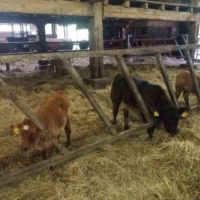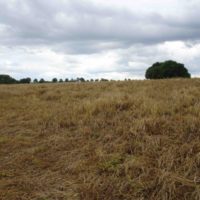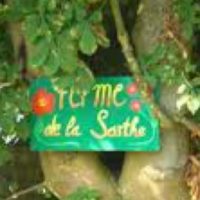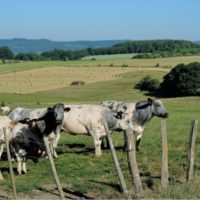Maximize grazing with diverse and productive grasslands
Description
Breeders are in organic farming since 2016. The fodder system is based on a large part of pasture despite the difficulty of accessibility (road with traffic). Forward, the whole farm will be fenced to allow different herds to graze (dairy cows, heifers, oxen). The most remote plots will be exploited by mowing and grazing.
The other innovation lies in the diversity of the forage. Short-lived grasslands rich in protein (annual clovers) are planted and grazed with wire. The protein resource is also provided by pastures rich in legumes with forage chicory. Chicory also ex-tends the grazing season.
Finally, the grazing is also highly optimized: the breeders have opted since 2017 on a division into paddocks of one day (35 plots).
Reason for the innovation
Constraints: drying soils with a grassland shoot, mostly composed of English rye-grass, which stops on June 20th and an ungrouped UAA around the homestead.
Maximize grazing to control the cost of food: implementation of dynamic rotational grazing (PâtureSens method); fence the whole of the UAA to have a maximum of parcels accessible to grazing (all the UAA)
Extend rotation times (for the most remote plots)
Farm description
Environment
This lowland farm is located in western France, in the department of Loire-Atlantique.
The climate is oceanic with a marked summer drought.
Soils are silty to sandy loam.
Grassland management
- Grazing: Yes- dynamic rotational grazing since 2017: 1 plot per day with a return time of 25 days on multi-species grass-lands based on English rye-grass, tall fescue, timothy grass, white clover.
- Short-lived grasslands are also installed to provide protein and pastured overhead: annual clovers and chicory.
- Diversification with tall fescue and chicory extends the grazing period.
Structure
- Annual Work Unit: 2 ; GAEC of two partners
- Agricultural Area : 132 ha UAA
- Main forage area : 91 ha
- 49 ha of temporary grasslands including 7 ha of alfalfa
- 7 ha of permanent grassland
- 35 ha of corn silage1
- 102 dairy cows Prim’Holstein
- Stacking rates: 1.4 livestock units (l.u) / ha main forage area
- Exploitation in organic farming since 2016
Animal performance
- Milk production per head: 8 500 L /year
Why it is working
Structural and binding elements:
- Ungrouped parcels around the homestead
- Very heterogeneous soils (wet and very dry)
The production of fodder must consider these elements: choice of species adapted to the soil context and the feed ration of the cows is adapted to the fodder production.
The diversification of fodder production is the key to success: consistency between soil and animal with the objective of autonomy.
Additional information
| Farming system | organic farming |
|---|---|
| Domains of innovation | grazing management system |
| Main types of animal | dairy cattle |
| Country | France |
| Product type | Farmer portrait |
| Language | English, French |



